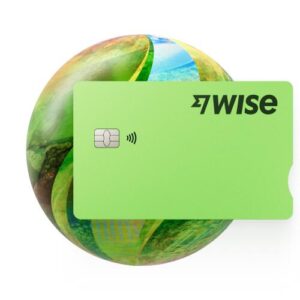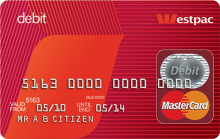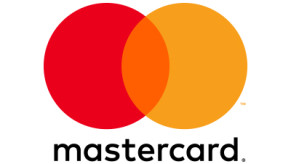USD cards in New Zealand: What are the options? 2025
A USD card can be helpful if you’re planning a trip to the US, or if you shop online with retailers that charge in USD. With a USD card you can add money in NZD and then switch over to US dollars in advance or when you transact - often with better NZD-USD exchange rates and lower overall fees compared to using your bank card.
This guide walks through all you need to know, to help you pick the perfect USD card for your specific needs. We’ll cover how and why a USD card can help - and also take a look at how USD cards from specialist non-bank providers like Wise, and banks like Westpac can help you get a better deal on your USD spending.
What is a USD card?
A USD card may also be referred to as a multi-currency card. That’s because most travel money cards support USD alongside a selection of other major currencies, making them handy for travel to the US as well as many other popular destinations from New Zealand.
While each USD card works a little differently, generally all let you add money online or in-app in NZD - often with your card or a bank transfer. You can then either convert to USD immediately to lock in an exchange rate, or leave it to the card to convert for you in some cases. Bear in mind some cards charge extra if you don’t switch to the currency you need ahead of time, so it’s important to understand the specific features of the card you pick - more on that later.
Related: Everything you need to know about international debit cards
3 best USD cards in New Zealand
Let’s look in more detail at our top 3 picks of USD cards you can get in New Zealand, so you can decide which is right for you.
Wise USD card
Register for a Wise account online or in-app, and order your Wise card for a one time fee of 14 NZD, with no ongoing charges and no minimum balance. Your Wise account lets you hold and exchange 40+ currencies including NZD and USD for spending in 150+ countries globally.
All currency conversion uses the mid-market rate and low fees from 0.43%. If you want to exchange your money in advance you can, but you can also choose to leave your money in NZD and let the card’s autoconvert tool do the conversion for you at the point of payment, with the lowest available fee and no foreign transaction charge.
Wise pros
✅ Currency conversion uses the mid-market rate, with fees from 0.43%
✅ No need to convert funds in advance as the card can automatically switch to USD at the point of payment with no extra charge
✅ No monthly fees or minimum balance
Wise cons
❌ You’ll need to pay a 14 NZD one time fee to get your card in the first place
❌ Some transaction fees apply, including ATM fees once you’ve exhausted your fee free allowance
Westpac Global Currency Card
Westpac’s Global Currency Card is designed for spending and withdrawals, and for shopping online, in 9 major global currencies including USD. You can order your card online, using your New Zealand passport or driving licence for verification, top up for free with a bank transfer, and then your physical card will arrive in about 5 - 10 business days.
Once you have your card you can spend securely anywhere that you see the Mastercard logo. It’s free to spend a currency you hold in your account, although a fee applies if you’re spending in an unsupported currency, or if you don’t hold enough of a particular currency in your account to cover a purchase. That means it’s important to switch over your funds from NZD to the currency you need right away to avoid a 2.95% conversion fee.
Westpac pros
✅ 9 currencies are supported - free to spend a currency you hold
✅ No Westpac international ATM fees apply
✅ No fee to top up by bank transfer
Westpac cons
❌ 2.95% fee if you spend in a currency you don’t hold in your account
❌ 1.5% fee to load funds with a debit card
❌ Exchange rate markups may apply when you convert from NZD to the currency you need for spending
Mastercard Cash Passport
The Mastercard Cash Passport can be ordered online or picked up in person at branches of various partner organisations like First Credit Union and Travel Money NZ. It’s free to order your card online, although there may be a fee to pick up and add funds to your card in person, which may vary based on the location you use.
Once you have a card you can hold and exchange 10 major currencies including USD, spend in person and online, and make cash withdrawals. Perks include free access to airport lounges if your flight is delayed. There are various fees you’ll want to be aware of, including an ATM fee which varies by currency, and a high currency conversion fee of 5.95% if you don’t have enough of the currency you need loaded onto your card to cover a transaction.
Mastercard Cash Passport pros
✅ 10 supported currencies, free to spend currencies you hold
✅ Extras like some lounge access if your flight is delayed
✅ Pick up in person or order online
Mastercard Cash Passport
❌ ATM withdrawal fees apply, including a 2.5 USD charge if you’re in Australia
❌ 5.95% currency conversion fee if you don’t have the currency you need on your card
❌ Cash out and some load fees may also apply, depending on how you use your card
Costs of getting a USD card in New Zealand
As we’ve seen, there are several different providers you can choose to get a USD card in New Zealand. Each card has its own fees, so it’s important to check over the costs of the one you choose to get. Here’s a rundown of the key costs for the cards we looked at earlier.
| Provider and card | Wise Card | Westpac Global Currency Card | Mastercard Cash Passport |
|---|---|---|---|
| Get a card | 14 NZD | No fee | No fee to order online - buying in store may mean a fee for the card, or to top up |
| Add money | Free to add money with local bank details in 9 currencies |
|
|
| Account maintenance fee | None | None | None - 10 NZD cash out fee applies if you close your account and withdraw remaining funds |
| Spend in USD |
|
|
|
| ATM withdrawal |
|
|
Fee varies by currency: 2.5 USD for withdrawals in the US, or 3.5 NZD in New Zealand for example |
*Information correct at time of writing - 28th September 2023
What exchange rate will be used?
The exchange rate to convert from NZD to USD will depend on the provider you pick.
If you choose a Wise card, you’ll be able to switch from one currency to another with the mid-market exchange rate. All the costs involved are split out, so you can easily see any fee you pay, and check how much your travel money is costing you.
Other USD cards may work differently, either charging a fee included in the exchange rate used when you top up in a foreign currency, or adding a charge if you spend in a currency you don’t hold in your account.
What is a USD card good for?
Using a USD card is as simple as using your bank card. But when you’re spending in US dollars, your USD card can be a better option as you might well get a better exchange rate and lower overall costs. That makes a USD card a good idea for anyone travelling to the US, or spending online with US based merchants.
The main advantages of using a USD card come in the fees and rates you’ll get, and the extra security offered. Because your USD card isn’t linked to your everyday account, it’s safe to use when you’re abroad or shopping with a new merchant. Even if you were unlucky enough to fall victim to a thief or fraud, the criminals can’t access your NZD account - and you can simply freeze or block your USD card without having to cancel your main bank debit card.
USD cards are also usually optimised for travellers, which means that as well as offering flexible ways to hold and spend in a selection of foreign currencies, you’ll usually find low or no international ATM fees and ways to avoid foreign transaction charges. Plus depending on the card you pick, it may come with other perks like discounts on travel bookings or airport lounge access.
Pros and cons of USD card
Pros:
- USD cards often offer multi-currency functionality, for use on future trips to places aside from the US, too
- Card exchange rates are usually transparent, and may be better than your normal bank card, as they often have ways to avoid foreign transaction fees
- Using a USD card can be safer than carrying lots of cash or using your bank debit card
- It’s usually free to spend currencies you hold in your account
- There’s no need to sort your USD travel money in advance - just make cash withdrawals on arrival in your destination
Cons:
- You’ll often have to apply for your card in advance and wait for it to arrive by post, so you can’t leave it to the last minute to get set up
- Most USD cards do have some fees which can include transaction and fair usage charges
- Topping up your card might incur a fee, depending on how you make your payment
Where can I use a USD card?
Use your USD card whenever you need to spend in US dollars. Generally that’ll be when you travel to the US and need to tap and pay in stores and restaurants, or when you’re shopping online with US based retailers. You can also use your USD card to make cash withdrawals in the US and at home - although fees may apply.
Different cards work in their own ways, so you’ll need to check the terms of the card you pick to make sure you know how you can best use it to avoid unnecessary costs. For example, some cards have a fee to pay if you don’t hold a high enough balance in the currency you need to cover the transaction. That means you’ll need to add money in NZD and convert immediately to USD for spending while you’re in the US, to avoid unnecessary charges.
USD card in New Zealand
Most USD cards can be used anywhere the network they’re issued on is supported - so anywhere you see the Mastercard or Visa logo for example - in the US, New Zealand, and around the world.
However, these cards are often designed for overseas use, so you’ll need to check that using your USD card at home in New Zealand doesn’t incur extra costs. For example, if you’ve already moved your money over to USD and need to convert back to NZD to spend at home, you may pay a conversion fee or penalty. Plus, exchange rates may have also changed, which can mean you get back less than you added in the first place. Similarly, some cards have a local ATM fee, even if there’s no fee to pay for using an ATM overseas.
Planning your travel money carefully so you spend all you exchange - or choosing a card that lets you keep your balance in NZD until you need it - may cut costs overall.
How to get an USD card in New Zealand
Generally you can order your USD card online or in-app, providing some ID for verification purposes.
Usually you’ll have to register your account digitally and get verified by uploading an image of your passport or driving licence, top up your account and pay any required card order or delivery fee, and your card will arrive by mail 5 to 10 working days later. If you’re in more of a hurry, the Mastercard Cash Passport can be bought in person in partner retailers and outlets, but this may mean higher fees compared to ordering online.
Check out the USD card order process for the provider you prefer, so you can prepare everything that’s needed.
Conclusion - Is a USD card worth it?
Using a USD card when you travel or shop online and pay in USD can mean you get better exchange rates and lower overall costs compared to using your bank debit card overseas.
Compare a few options to see which might suit your needs. If you want a flexible account and card you can use for your trip to the US, and also in 150+ other countries, you might like Wise. Or, if you’re in a hurry and need to get a card very quickly, the Mastercard Cash Passport can be convenient as you can get it instantly in branches of partner organisations like First Credit Union and Travel Money NZ.
This guide should be enough to kick start your research and help you find the USD card which suits you best.
FAQ - The Best Travel Cards to Use in New Zealand
Benefits of using an UDS card
Using a USD card can mean you pay lower overall costs when you’re travelling in the US, or when you’re shopping online with US based merchants. Many cards let you convert to USD in advance if you want to see your travel budget clearly, and can lock in an exchange rate. Some cards also let you leave your money in NZD and convert at the point of payment with no extra costs, if that’s what you’d prefer.
Are UDS cards available in New Zealand?
Yes. You’ll find options from several providers, including the Wise card, Westpac’s Global Currency Card, and the Mastercard Cash Passport which are all available to customers in New Zealand.
How much does an USD card cost?
The costs of a USD card can vary depending on the specific card you select. You’ll often find there are free ways to add money, and some transactions are free too. However, in many cases there are some fees to pay for currency conversion or ATM withdrawals - double check the fee schedule for the card you prefer so there are no surprises.




